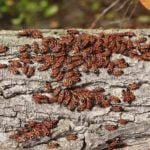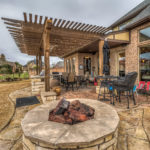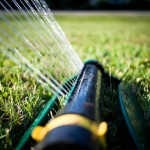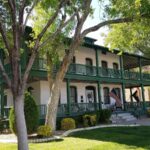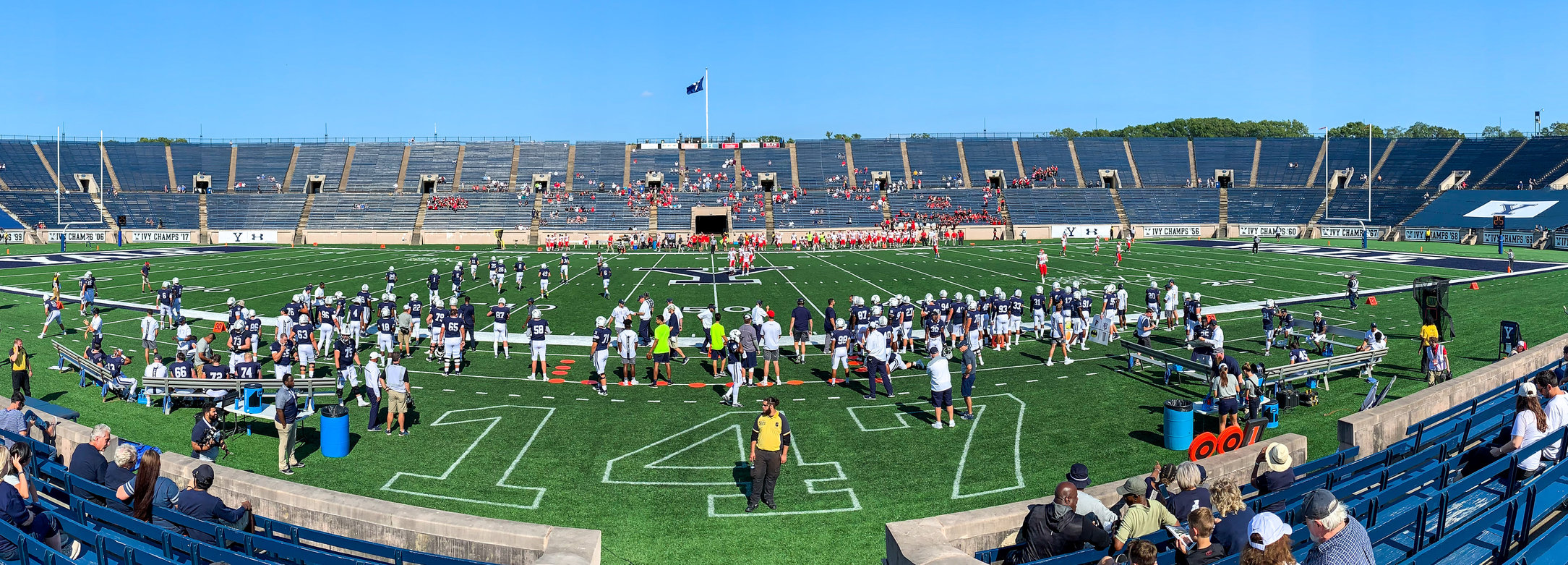
When a college football team competes on new turf at its home stadium, it could put a new spring in their step and boost their pride. What it won’t do is propel the team to victory.
A LawnStarter analysis of the 15 U.S. college football teams that played on new home turf in the 2019 season showed that, on the whole, they played a little worse than they did on their old grass.
In 2018, the 15 college teams collectively posted a 57-32 home record. That’s a 64% winning record when benefiting from a home-field advantage. All 15 teams played their 2019 seasons on new turf. The result was something no booster could love: a collective 55-37 home record — just below 60%.
Schools Trend Toward Artificial Turf
In choosing new turf, more schools opted for artificial turf.
- Four schools tore up natural grass and installed artificial turf.
- Nine schools replaced one artificial turf with another.
- One school (Michigan State University) swapped one natural grass surface for another.
- Just one (the University of Arkansas) went from artificial turf to natural grass.
“I’m a natural grass type of guy. I love being on a grass field,” then-Arkansas head coach Chad Morris said before the installation of Tahoma natural turf. “There’s nothing better than that in college football, or football period.”
Morris’ team repeated its 2-5 home record in 2019. A day after the Razorbacks’ final game of the year — a 45-19 home drubbing at the hands of Western Kentucky — Arkansas fired Morris.
Type of Turf Yields No Advantage
Andrew McNitt, director of the Sports Surface Research Center at Pennsylvania State University, says there’s no research demonstrating one way or the other whether artificial turf of natural grass provides a winning edge in college football.
“If there were a competitive advantage, everyone would have that [turf] system,” McNitt says.
- A study published in 2016 in the Journal of Sports Analytics underscores McNitt’s statement. While the research focused on soccer, there are parallels between that sport and American football. The study found that Major League Soccer teams playing on artificial turf didn’t hold an “unfair advantage” over opponents playing on natural grass.
- A study published in 2018 in the International Journal of Performance Analysis in Sport arrived at a similar conclusion: Professional soccer teams didn’t enjoy a noticeable home-field benefit on artificial turf versus natural grass.
However, artificial turf does typically beats natural grass in terms of maintenance costs and speed of play. But artificial turf often gets knocked for a potentially higher risk of player injuries versus natural grass, although evidence of this isn’t conclusive.
How Teams With New Turf Performed
Teams playing football on new turf for the 2019 season generally performed about the same as they did the year before.
Powerhouses such as Baylor University and the University of Oregon remained consistent winners. Baylor lost twice in 2018 at McLane Stadium. In 2019, playing on new Hellas Matrix 46H synthetic turf underlined by a Cushdrain shock attenuation pad, they had only one loss. And when the Oregon Ducks took the field at Autzen Stadium on their new FieldTurf artificial surface, they were coming off a successful 6-1 home season. They did even better in 2019, going 7-0 at home.
Here’s the rundown of the turf changes in 2019 at the 15 schools, and how they were reflected in team records:
| New turf doesn't lead to more victories for college football teams | ||||
|---|---|---|---|---|
| College | 2018 turf | 2019 turf | 2018 home record | 2019 home record |
| Bakersfield College | Natural grass | Artificial turf | 5-0 | 0-5 |
| Baylor University | Artificial turf | Artificial turf | 4-2 | 6-1 |
| Boise State University | Artificial turf | Artificial turf | 5-2 | 7-0 |
| Fresno State University | Artificial turf | Artificial turf | 6-0 | 2-4 |
| Michigan State University | Natural grass | Natural grass | 3-3 | 4-3 |
| Texas A&M University Commerce | Artificial turf | Artificial turf | 4-2 | 5-0 |
| University of Arkansas | Artificial turf | Natural grass | 2-5 | 2-5 |
| University of Minnesota | Artificial turf | Artificial turf | 5-2 | 6-1 |
| University of North Carolina | Natural grass | Artificial turf | 2-3 | 3-3 |
| University of Old Dominion | Artificial turf | Artificial turf | 3-3 | 1-5 |
| University of Oregon | Artificial turf | Artificial turf | 6-1 | 7-0 |
| University of Rhode Island | Natural grass | Artificial turf | 4-1 | 1-4 |
| University of Texas at San Antonio | Artificial turf | Artificial turf | 2-4 | 2-4 |
| University of West Texas A&M | Artificial turf | Artificial turf | 3-2 | 4-2 |
| Yale University | Natural grass | Artificial turf | 3-2 | 5-0 |
| Source: LawnStarter.com research | Total 2018 home record: 57-32 (64%) | Total 2019 home record: 55-37 (60%) | ||
New Turf Turnarounds
There were a few dramatic turnarounds for teams on new turf — mostly in the wrong direction.
Fresno State University
Bulldog Stadium, Fresno, Calif.
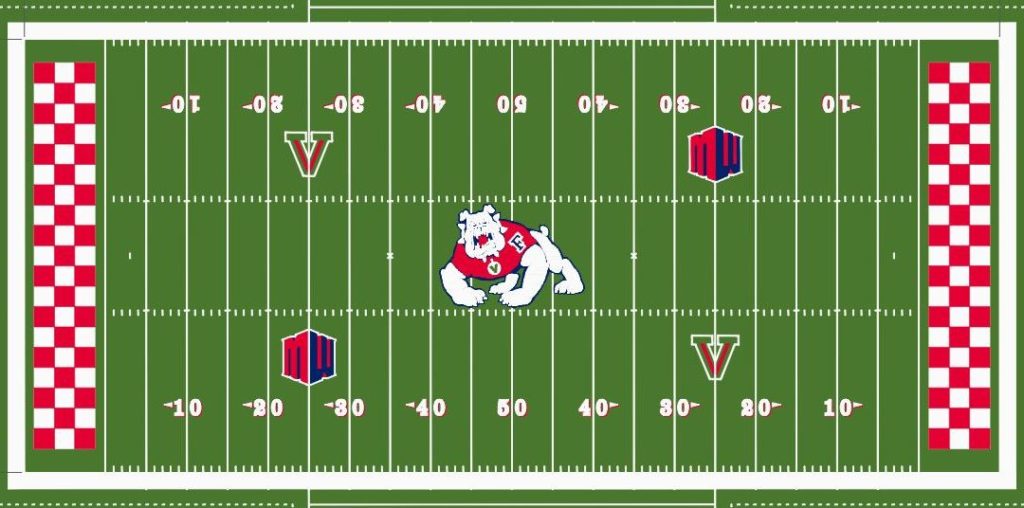
The Fresno State Bulldogs were excited going into the 2019 season.
In a 2019 news release from artificial turf provider AstroTurf, Terry Tumey, athletic director at Fresno State, said swapping one brand of artificial turf (FieldTurf) for another (AstroTurf) was the “right choice” for the football program. Before 2011, natural grass had been the team’s only home surface since Bulldog Stadium debuted in 1980.
“We put a lot of thought into what we wanted out of our new field at Bulldog Stadium,” Tumey said. “We looked at every aspect of what was needed out of a new surface from a standpoint of performance, safety, aesthetics and durability.”
The turf replacement failed to translate into improved performance. Fresno State went 6-0 at home during the 2018 season but dropped to 2-4 in 2019.
After their unsuccessful season, Fresno State’s coach stepped down for health reasons, so in 2020, a new coach will be marching on the sidelines of their almost-new turf.
University of Rhode Island
Meade Stadium, Kingston, R.I.
Venerable Meade Stadium, built in 1928, had given fans of the University of Rhode Island Rams few reasons to cheer in recent years. But that changed in 2018 when the team posted its first winning record in 17 years, including a 4-1 record at home. Replacing the old natural turf with new artificial turf was supposed to help continue the momentum.
“It’s certainly exciting to think that next season we will be able to have an incredible game and practice facility,” head coach Jim Fleming said after his team’s final spring practice on the old sod.
The artificial grass didn’t lead to glory. In 2019, the team fell to the bottom of its conference, including a 1-4 record at home.
Bakersfield College
Memorial Stadium, Bakersfield, Calif.
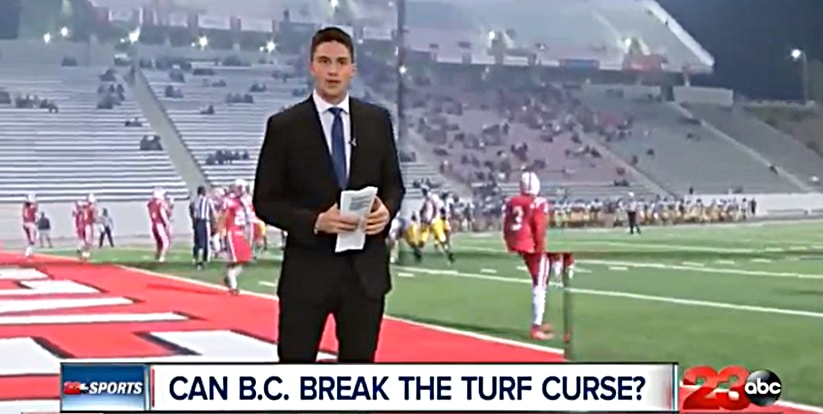
The saddest fate befell the Renegades of Bakersfield College, a community college in Central California. Its storied football team has won five national championships, the most recent in 2012, and more than 20 conference championships.
After ending the 2018 season on a roll with four consecutive home wins, the ‘Gades took to Memorial Stadium’s new pro-level artificial FieldTurf eagerly in 2019.
The year went poorly. By the day of Bakersfield College’s final home game of 2019, TV station KERO-TV ran a preview of the game with the provocative teaser line, “Can B.C. break the turf curse?”
The ‘Gades couldn’t. After going 5-0 on its old turf in 2018, the team dropped its final game 24-7. Its 2019 home record: 0-5.
Yale University
Yale Bowl, New Haven, Conn.
The year’s feel-good-about-the-grass story came at Yale University. Ahead of the 2019 season, Yale ripped out the natural grass at the historic Yale Bowl and installed artificial turf.
Natural grass had covered the field at the Yale Bowl since it opened in 1914.
“So far, the team is generally loving the turf,” captain and wide receiver JP Shohfi told the Yale Daily News in September 2019. “We feel fast on it. The new surface really feels great. Ultimately, we’d love to play on any surface, but avoiding a slippery and muddy field, especially in bad weather, is something we’re excited about.”
“In my opinion, I think it looks great, and the turf helps to illuminate the Bowl, giving more energy to everyone playing and watching the game,” said quarterback Kurt Rawlings. “In return, I think better games will be played on it as slower speeds and slipping will no longer be a factor in the game.”
There’s no telling whether the new turf made a difference in scoring, but the Yale Bulldogs clawed their way to a 5-0 home record in 2019, compared with a 3-2 home record the year before.
Main image: Panoramic view of the Yale Bowl after new turf installed. Credit: Kenneth Zirkel, Wikimedia, CC by SA 4.0
